- Beyond simply repairing wildlife tracking devices in his remote study site, one biologist shifted to engineering them himself for a range of species and research projects.
- Biological research experience helps with designing equipment and use protocol appropriate for a given study.
- Rasmussen foresees the evolution of two levels of monitoring devices: smaller, cheaper tags to help answer management questions and state-of-the-art equipment for pure research that remains expensive.
Many wildlife biologists, studying poorly known species and remote places, struggle to find durable, low-cost technology that does what they actually want effectively. Researchers often try to adjust existing devices, but few take the plunge to building their own, and even fewer move into that business full-time.
Henrik Rasmussen did just that. Based in Nairobi, Kenya, he is the founder and director of Savannah Tracking, which produces field research devices, particularly tracking tags for large birds and mammals. We spoke with Henrik about his progression from student to wildlife biologist to engineer and some of the challenges at each step.
WildTech: Where did you start your research and conservation career?
In Denmark, we had a good probability of being drafted for military service, but if you volunteered, you could have a say in where you were going. So I volunteered to be stationed at a small naval base in Greenland for 6 months. We worked normal hours, and I was often running around hiking and fishing. That’s how I got introduced to the Arctic and Greenland, and this got me started in studying biology.
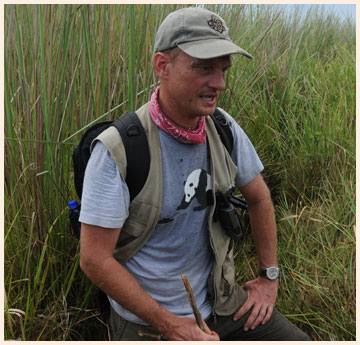
I later ran a science support facility, still as an undergraduate, with the Danish Polar Centre, which coordinated the logistics of research in Greenland and was later stationed for a season on the then newly started Zackenberg Ecological Research Operation. The idea there was to establish a long-term monitoring system for climate change and to establish ecological baseline studies, as people going in for one season didn’t know whether their study year was typical or unusual. I was there during the second year of operation, doing transects and flowering phenology and counting birds and nests and other things. I was planning to study bumblebee nest hierarchy and climate change in the Arctic for my masters project, but a ticket to get there costs $5,000-6,000.
WildTech: How did you end up in Kenya, working with elephants?
A friend at University asked if I’d seen an ad for a project on elephants in Kenya, and I jumped at the chance. The project was to link biology to computer science, modeling animal behavior. Dr. Fritz Vollrath was friends with Dr. Iain Douglas-Hamilton of Save The Elephants and wanted to work on elephants with GPS collars, which Iain was already using. So I wrote a proposal to study mating tactics and musth in bull elephants, to look into how they move and what influences onset of sexual activity and musth period. They liked the idea, so I shifted from northeast Greenland to Kenya and later continued my project at Oxford to do my PhD. For that, I worked with GPS tracking collars to study elephant movements, search patterns, changes in hormones, and how hormones control behavior, through fecal analyses.
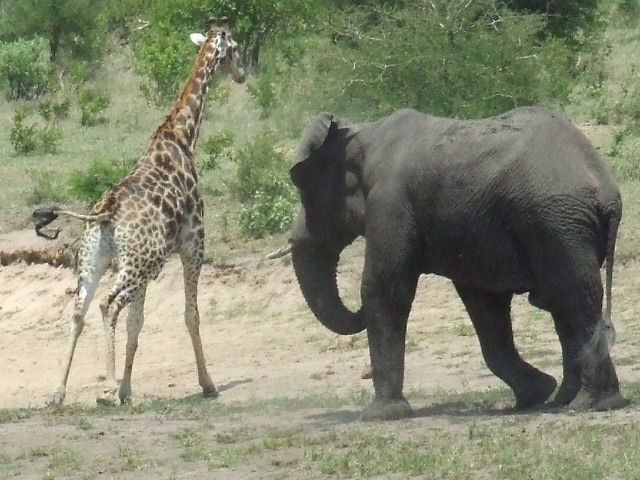
We had these tracking collars on [the elephants] and I’d go out every 3 days and collect poo samples from a whole bunch of animals and get profiles of androgens and cortisols. Since we knew where each elephant was, from the collars, we’d get the animal’s position and I’d just wait for it to produce [defecate], so we’d get these long-term samples — 1-2 years of samples from the same known individuals.
We were looking at their competitive environment – were they the dominant bull in the area, or a subordinate, and had they encountered estrous females in the area and how did that affect them. If an estrous female was in the area, the androgen level would spike in the beginning of musth period and would slowly trail off. And the levels would decrease if he didn’t encounter any receptive females.
WildTech: How did you shift toward engineering technological devices, rather than just using them?
I got a little tired of science after my PhD. I did 2 years of a postdoc at University of Copenhagen but mainly based in Kenya, but I needed a break – endless applications for money, and then you think you’re writing an interesting paper, and it gets accepted only if you take out all the interesting things, and it’ll be rejected if you stand your ground. And I’m not very good at listening to others!
I’ve always liked doing practical things, building things, and I’d started repairing Save The Elephants GPS collars in Samburu, using a Leatherman. I did fix things on a number of occasions. And I thought maybe I could do this better myself (my default attitude to most things).
WildTech: When did you start your company? And was it always in Kenya?
In 2008, so it’s seven years now. I briefly started in Denmark, but was mostly in Kenya.
I also had this illusion that if I can just make my own salary, then I can do away with all the grant applications, then I don’t need to teach and do admin, so I can still take 1/3 of my time to do my own research. Then I ended up spending 120% of my time on the company so haven’t gotten to work on my own research, but I still have this illusion.
Doing hardware and software is challenging and I find it interesting. It’s new ways of getting things to work. Curiosity is my weak point – as soon as I can see that things can work, I want to do something else. Once you have proof of concept, then you have to get into the tedious part of producing it. I’d love to run an R & D department and build prototypes and then hand over that part to somebody. If I didn’t have to touch if after that, it would be great.
WildTech: How do you apply your biological training to designing the actual devices?
I wanted to continue working with research and being involved with the projects, even if I’m selling the equipment to people, and some of my work is designing the equipment with the projects in mind.
I want to see if we can produce and put some game-changing units out there that can work with anti-poaching, instead of running around looking at elephants and counting concentrations of their hormones. They are disappearing in front of our eyes, so they’re going to be gone and scientists will be saying “yes, these animals died out, and here is their hormone profile”. I’d rather say screw the hormone profile and we actually made sure they continued being there.
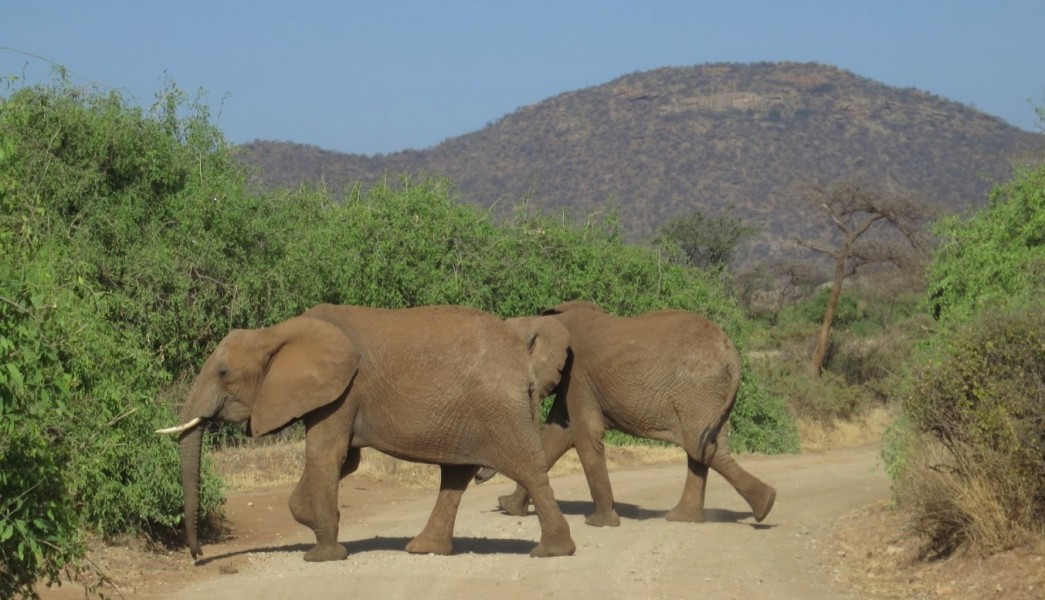
So if I can contribute with some hardware and software solutions, I think I can have a much bigger impact than running around as a researcher. I can also help with basic research and experimental design — how many units do they need and how do you deploy them, that’s kind of like part of the package – I sit with people and ask what they need and I might say how I might design this project. Many actually have little experience with setting up projects involving GPS tracking.
The cost is really the time and knowledge and ability — the year and a half when you’ve been toying with a device and putting in engineering time, and my time, coming up with new designs.
I delivered some collars and then the people asked if I could send them the drawings and specifications for batteries and hardware and how I put it together so they could do it themselves. How can you contact a company and say now I have some of your equipment – could you just send me all the drawings so I can copy it so it’s cheaper for me? You can ask for a discount or whatever, but how can you ask that question?
WildTech: For your project, you rely heavily on GPS technology. How did you come to decide on this as your best option?
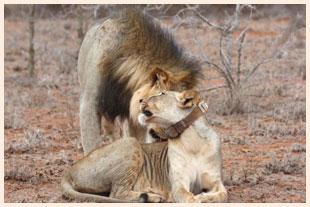
It’s a core piece of technology used in various conservation and wildlife management projects. Researchers in the 1960s used radio collars, radio beacons with antennas, to get an idea of their ranging patterns and how big an area species were using. GPS allows researchers to define higher resolution ranges and also gives negative data — where animals are NOT going.
GPS tags collect very frequent point locations to facilitate tracking species of concern so parks can deploy patrols toward those areas for day-to-day management, not just research.
For anti-poaching, we can also integrate the GPS data with new technologies that give alarms of poaching events, to better deploy patrols and combat the current poaching crisis. Our ear tags monitor the motion of rhinos, down to a few minutes response time from the animal stopping its movements, so we will know something has happened to it. There is also a project tracking vultures in Namibia, where the birds are indicators as they fly around looking for carcasses, so you can send patrols out to those areas.
WildTech: What are the most important applications of the tracking data that people are getting with your collars?
People have generally been happy with the technologies so far. For example, people tracking lions in Lewa Conservancy [in Kenya] are getting really good data on selection of prey by looking at the tracking data and being able to identify kills as they are happening, when lions stop moving for a bit, so the researchers can go out and identify the prey while it is still identifiable.
About half the collars are on bloody zebras! For grevy zebra, I think they are getting very interesting results on connectivity between concentrations of zebras. They’re all really one big population — zebras you see in one area are some 100 km away a month later and these sub-groups are all interconnected, so that’s some interesting results. They’re connected more than people thought.
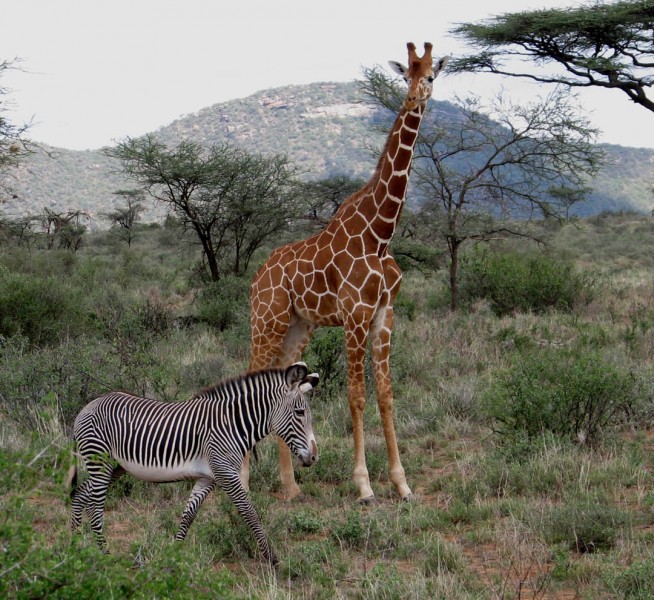
In northern Kenya, our tracking devices on elephants have shown which corridors elephants were using between Mount Kenya and Samburu [National Reserve], in the face of increasing small-scale farming, which we hope will help reduce negative interaction between animals and farmers.
We can also use these data visually to see how these animals are moving around. The datasets are visually captivating for non-experts to look at as well, so good for connecting to a wider audience.
WildTech: When you showed the elephant icons moving on the screen [to an audience at a wildlife hackathon], everyone lit up.
That happens every time.
Movements of GPS collared elephants along the Ewaso Nyiro river in Samburu, northern Kenya. This video from Save The Elephants is also highlighted in WildTech’s recent interview with Dr. Iain Douglas-Hamilton.
WildTech: How do you make sure the right people getting the right equipment for the right questions?
Good question. Funding is not easy to come by in our world, and GPS tracking equipment is bloody expensive. I’d love to push it into a much cheaper equilibrium. Right now, it’s very few units and high cost per unit, because if I’m selling only a few, I need to make a bigger profit per unit. But if I can sell ten times as many, I can sell for less. We’re talking about expensive equipment in an environment in which money is not easy to come by.
But what shocks me is the amount of equipment that I am making that turns out to be misused or never used or switched on and left in a closet to run down the battery. I thought there would be no waste, but you’d be surprised how many of my collars never end up on animals. It’s frustrating for me – even if money ends up in my bank account, I want to see my equipment on animals and see good data come out.
I’m not interested in tags burning out in an office in Nairobi. It’s also bad for business – the more good projects that we have and the more people talk about the collars, the more business I’m getting. There are a lot of people that don’t use delivered equipment. That shocked me.
I delivered some collars to a group, and after 8 months—they’d been lying around, taking positions every hour in a basement—they no longer worked as they’d been left on trying to get a position all that time. I tell people, I can see the tags are reporting in, but they’re timing out because they are in an environment where they can’t get a position. Sometimes I’ve sent 4 or 5 emails to people saying, either switch them off or at least keep them outside so they get positions more quickly so they don’t burn the battery trying to get a fix. What else can I do — the equipment isn’t mine anymore, and then it just dies. That surprised me.
WildTech: you have software that goes with your GPS data – do you develop software and hardware?
Yes, we have our own bespoke software for organizing and processing GPS tracking data, so for each unit, you can see an overview of the last positions, you can add additional columns with data about the animal (gender, name, if you have a tissue sample, etc) and you can query based on any of these (all the males in Samburu that are older than three years, for example). It’s not designed to be analytical, but more for organizing and managing the data and you can export queried data into ESRI or R or other software [to analyze].
WildTech: Have you seen wildlife monitoring tech evolving in East Africa?
Yes, but we could move much faster and make some more rapid decisions. I’ve tried to get collaborations, and I’ve tried contacting some conservation organizations to propose an advanced order to pay up front for new types of technology. But people aren’t willing to take a risk on building the new technology, or maybe Savannah Tracking has been the new kid on the block so we need to prove we can deliver.
There are projects with hundreds of thousands of dollars buying old-hat technology that is 10 or 15 years old. If they could just take a chance to try something new, with me or somebody else—just try something. We could move much faster if people were willing to take a chance.
WildTech: Where do you see technology heading in the next five to ten years?
Everything is getting smaller and lighter, so tracking is going to change – you’re going to have a dramatic drop in price, then you can deploy more units. You don’t want to track everything—there are other associated costs and stress levels and trauma, so why would you do it, even if you could do it for free?
So within the ethical consideration that you should not track all animals, we are in a transition away from the low-volume, high-price, to low-price, high-volume equilibrium.
It then becomes more of a management tool. Researchers always want [to add] the latest and smartest tech, and that is why collars haven’t become either cheaper or lighter. You can do some things that are a fraction of the cost, and also smaller, if you are OK with collecting positions every two hours, and for management purposes, that’s all you need. So why do you want collect all this data if your main questions are management questions where you just need a few locations per day? Why would you deploy a large collar that costs $2,000 on an animal when you can do [tracking] with much less? So I see a separation into low-cost, simpler units for management-related questions and then state of the art equipment for pure research, which will continue to be expensive.
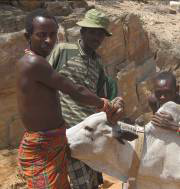
We’ve toyed with putting together a device that would fit on anything from a cheetah to a cow, to a lion, to a zebra. It would hang on the neck, and would be as cheap as chips because you don’t have to laminate anything, it just sits on the neck. We could make it cheap, but it never caught on, because people wanted the [full suite of new sensors]. This collar wouldn’t bother a zebra. We did sell some for cows… You have a preset tool to record every two hours maybe for veterinary reasons. If you treat an animal and you have it down anyway, and you need to come back and treat this animal in two weeks, it can almost be a consumable—it’s not a big decision, in which we put a bunch of tags and just tag the animal.
For management, they’ve got to be cheap. That’s what I hope would happen, that people will start asking what is actually needed, rather than what is possible to do. But that’s not necessarily where technology goes, and of course we will get more and more different types of sensors that may help us.
WildTech: Do you have any tips for aspiring conservationists, especially those who might want to work with spatial data, in your field?
Ecosystems are incredibly complex – animals are interacting with a million different things, and when you’re a student you always hear you need to have your thesis and test your hypothesis. I can come with 15 different hypotheses about which way something works, and it actually doesn’t really help to test [just] one.
You should go out with your open eyes and don’t test any hypotheses at first. Just see what happens, and then get inspired by it. Then you go dig in and ask specific questions. And let your data talk to you and don’t try to limit yourself quickly because the systems are so complex, this type of research doesn’t fit into an experimental setup. If you’re testing the effect of one drug on the development of some weird things in a petri dish, you can give nothing to this dish and two grams to another dish. The world is not like that.
Sit and watch your animals without any idea of what you will see. Do that for six months before you start developing anything of your ideas.
This article has been edited for length and clarity.
